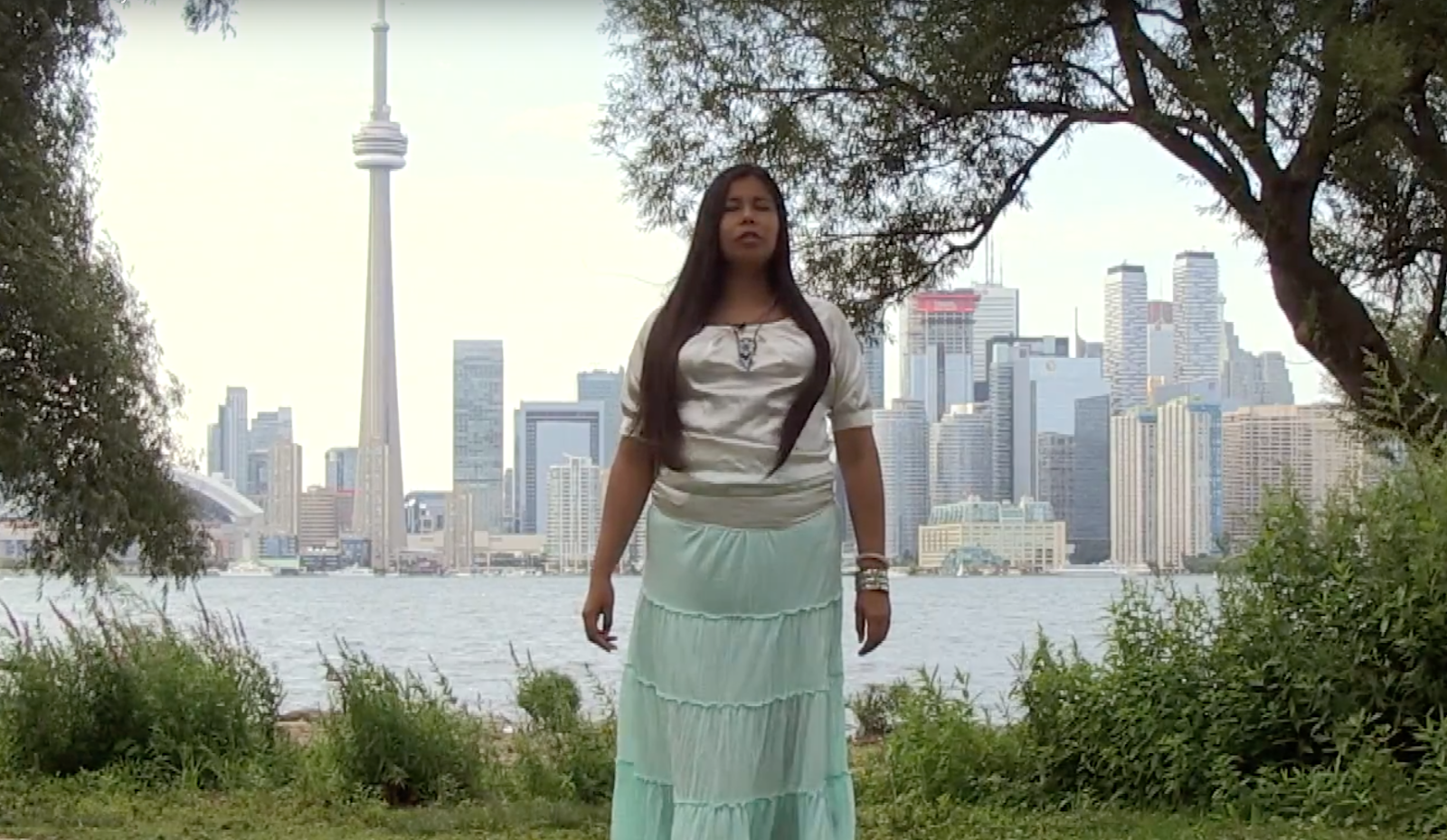TakingITGlobal
Whose Land Videos
Working in collaboration with Indigenous peoples across Turtle Island, the TIG team has helped to facilitate the creation of a series of videos which portray Indigenous perspectives about the importance of land and culture. Aiming to increase understanding of why land acknowledgements are important, and the way Indigenous people view their relationship to land, these videos complement a web-based app that uses GIS technology to assist users in identifying Indigenous Nations, territories, and Indigenous communities across Canada. The app consists of six different maps of Indigenous territories, Treaties, and First Nations, Inuit, and Metis communities. Each community’s location will eventually host a land acknowledgement video, and other information that the community would like to include on their page. The app will be used as an educational tool to create dialogue around reconciliation. It will be a starting point for conversation between Indigenous and non-Indigenous citizens across this country about land, territorial recognition and land acknowledgement. Thus far, 8 videos have been created and posted to the page.
Through the SJRK project, the IDRC worked with TIG to support development of the initial concept of this community storytelling initiative. The pilot project has since been successfully scaled into a full project called CanCode which will entail working with 80 Indigenous youth from 40 communities to create community videos. The next step of engagement with SJRK will focus on ensuring transcription content is available in Indigenous languages, some of which are considered to be endangered.

Video still from Land Acknowledgement Poem by Lena Recollect
Toolkit Development
TIG is working to align the Rising Youth Guide to Action with the inclusion goals of the SJRK project. Thus far, this has involved breaking the process of designing service projects and partnership building with other organizations into an easy to understand, youth friendly guide which enables young people to grow their agency and impact at the community level. Starting with a vision for their communities, youth are guided through a process to map their assets or gifts, and then to use a design canvass to build out their service projects. Connection to SDGs is still to be strengthened in this output, and there is an intention to branch the document into a stand-alone asset focused entirely on Sustainable Development Goals.
Inclusive Activity Animation Guide
TBD
Influence on other TIG projects
Overall, involvement with the SJRK project has provided an ongoing focus on inclusion and accessibility across TIG projects. Learning from the inclusive design best practices being modeled by the IDRC, TIG staff involved in the project have acted as inclusive design mediators to ensure inclusion and accessibility are incorporated across other TIG projects and deliverables. Examples of this include: ensuring that the grant process for the Canada Service Core are aligned with accessibility options. Implementing a partnership with the CCSD - Canadian Center for Deaf Culture, Unlocking Culture, has also greatly benefitted from the learnings and conversations occurring within SJRK. Unlocking Culture seeks to provide digital platforms to enhance ASL and LSQ instruction facilitated by Deaf individuals across Canada. Participation in SJRK has greatly demystified the process of determining and implementing accessibility and inclusion initiatives across the project.
Future
- Proposed Mash-up to leverage SJRK storytelling tool across TIG initiatives Decarbonize/Decolonize and CanCode - Create to Learn.
- Collaboration through Canada Service Core project to pilot implementation of Guide to Action.

Video still from Create to Learn overview.
Events
Upcoming
Connecting With Our First Family Plant Series Launch @ Evergreen Brick Works May 9th, 2019
Future Pathways Summit - these events will gather Indigenous students to evaluate how their post secondary institutions’ could better serve the needs of Indigenous students.
- Toronto @ OCAD University - May 28,29, 2019
- Saskatoon, June 17-19, 2019
Past
Whose.Land event - community engagement @MARS, Toronto, May 6th, 2019
Create to Learn (CTL)
- CTL 1: Toronto, Ontario, March 23-25th 2018 - 24 participants/13 communities
- CTL 2: Toronto, Ontario, August 27-31 2018 - 21 participants/13 communities
- CTL 3: Saskatoon, SK, November 13-17 2018 - 7 participants/4 communities
- In partnership with Canadian Roots Exchange (National Reconciliation Gathering 2018)
- CTL 4: London, Ontario, February 3-9 2019 - 38 participants/24 communities
- In partnership with the Chiefs of Ontario (Stories From Our Roots Gathering 2019)
- In partnership with Imaginative (Providing Indigenous Media mentors)
- CTL 5: Bolton, ON, February 24- March 3 2019 - 6 participants/5 communities
- In partnership with the Student Commission of Canada (CanadaWeWant Conference 2019)
- In partnership with Imaginative (Providing Indigenous Media mentors)
- CTL 6: Ottawa, ON, March 22-25 2018 - 13 participants/8 communities
- In partnership with Nunavut Sivuniksavut
- CTL 7: Haida Gwaii, BC, March 28-31 2019 - 7 participants/4 communities
- C2L Total: 116 participants from 66 communities, from 9 provinces and territories